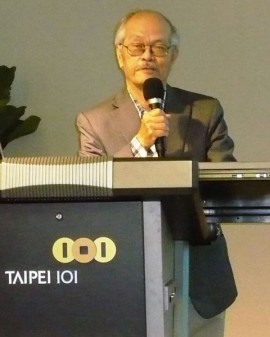
Born in 1961 in Tongxiao, Miaoli County, Taiwan, Kang Muxiang— often referred to as the “primitive man of modern Taiwan”—is one of the few Taiwanese woodcarvers to have made his way onto the international stage. He was first introduced to traditional woodcarving at the age of 13, and over the past 30 years has evolved from a craftsman to an artisan and finally an artist, continually challenging established concepts and transcending his own limitations. His works are made with traditional skill and experience, and are therefore close to nature, yet they also incorporate elements of contemporary art. Having traveled widely to such places as Fiji, Indonesia, Singapore, Hong Kong, Costa Rica, Panama, Cuba, Japan, Beijing, and Shanghai, Kang Muxiang brings together different cultures in his work. Based on his passion for woodcarving and artistic creation, he uses a chisel and natural wood to celebrate life.
In 2002, Kang was invited to move to the uninhabited Turtle Island off Taiwan’s east coast and use local driftwood for his artistic endeavors. Living and working on the island for nearly a year, he gained a unique perspective and created a series of works titled Life. In 2013, he was asked to create an environmentally friendly art piece of recycled steel cables that were previously used in elevators. Titled Unlimited Life, the piece was exhibited at the plaza of the Taipei 101 building and received considerable attention due to its theme of rebirth.
In the same vein, Kang Muxiang created a piece titled Taiwan Ruyi, which was made from steel cables originally used in the high-speed elevators of the Taipei 101 building. The ROC government presented this piece as a gift to Karlsruhe, Germany, to celebrate the 300th anniversary of that city’s founding. The artwork will be on permanent display in the city to mark the friendship between Taiwan and Germany.
From environmental rebirth to Taiwan Ruyi
Taiwan Ruyi is Kang Muxiang’s second steel cable-based creation following the public artwork Unlimited Life, which was exhibited at the plaza of the Taipei 101 building. Kang’s use of discarded steel cables dovetails with Germany’s status as a model of recycling and environmental protection, and the exhibition of his work in Germany accurately captures the zeitgeist of the current age. The work has been presented by the ROC government to Karlsruhe, Germany, to mark the 300th anniversary of the city’s founding. The artwork will be on permanent display in the city to mark the friendship between Taiwan and Germany.
The Life series include some of Kang Muxiang’s most important works of recent years. Based on the belief that all objects possess a spirit, Kang adopts various materials to explore the beauty and sustainability of life. The piece made of discarded steel cables is the only one of its kind in the world. These cables came from the Taipei 101 building, where they were used in high-speed elevators. Having accumulated 600,000 kilometers, they were retired and meant to be discarded, but were ultimately given new life through Kang’s artistic creation.
Kang believes that Taiwan symbolizes the Orient. It was therefore very meaningful that Taiwan Ruyi was given to Germany, as the work brings together East and West and reflects the pursuit of perfection. In Asian culture, the term ruyi 如意refers not only to auspicious pieces employed by ancient emperors and nobility, but also to blessings and the hope that all things are harmonized, combine yin and yang, and reach a state of perfection. In addition, in ancient times, ruyi had a meaning related to environmental protection, i.e. allowing nature to develop freely. This is in line with the German ethos of assiduousness, discipline, and innovation. Indeed, we can speak of two different approaches that share the same fundamental goal and spirit.
* Pedro Tseng was the first person in Taiwan to gain a doctorate in art criticism.

